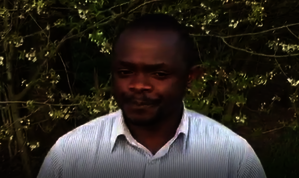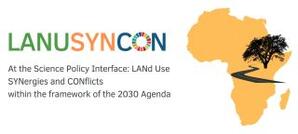Philipo Jacob

Research Topic:
Synergies and trade-offs between road development, livelihood and biodiversity conservation in the Greater Serengeti Ecosystem (GSE)
Contact: philipatali(at)gmail.com
Abstract:
Tanzania is among the 193 Countries have adopted the 17 Sustainable Development Goals (SDGs) as their Vision 2030. SDGs are expected to be the roadmap to ending the countries’ poverty and ensuring the sharing of prosperity, improve people’s livelihoods, and protect biodiversity for the current and future generations. Road development has been taken as a smart move towards poverty reduction. The country has established and upgraded 32 % of its road network between 2015 – 2020, and currently the country is operationalizing two big projects namely Resilient Natural Resource Management for Tourism and Growth project (REGROW) and Southern Agricultural Growth Corridor of Tanzania (SAGCOT, which aims at rural development and poverty reduction in different parts of the country. The Greater Serengeti Ecosystem (GSE) has also a potential to be destructed through the road development projects. The ecosystem hosts the largest ungulates migration in the world and is among the most visited tourism destination in Africa. It maintains 1 million metric tons of carbon. It is home to two UNESCO World Heritage sites (Ngorongoro Conservation Area and Serengeti National Park) and one biosphere reserve (Serengeti-Ngorongoro). It is recognized as a rare and iconic ecosystem that is enriched with a large mammal migration.
For the past 30 years there has been a discussion to expand the road network in order to connect and provide markets to the people around the GSE. These roads if developed will come at the expense of movement patterns and migration of the million ungulates in the ecosystem. The development of roads along the GSE if carefully planned, will play part in the poverty alleviation or otherwise will creates the illusion of development if long-term environmental costs will be ignored. Alarmed by the plans to build the Serengeti road, ecologists and biologists came up with three different options namely Serengeti, Eyasi or Mbulu route in order to maintain the ecological functionality of the region. This study is conducted in order to evaluate and predict the impact of roads on biodiversity changes in terms of habitat quality, animal population, behavior, and distribution, it intends to assess the tradeoffs of the three routes that have been suggested by Hopcraft et al. (2015).
The project aims at attaining the following objectives:
- Assess the direct and indirect impact road development on high biodiversity areas for both biodiversity and livelihood in the Sub Saharan Africa.
- Assess how the development of road influences the population growth and land use changes in the Greater Serengeti Ecosystem.
This research project is funded by the German Federal Ministry of Education and Research.
Further research projects:
- Rungwecebus Kipunji Monitoring and Awareness in the Livingstone Mountains Ecosystem. This project is funded by the Rufford Small Grant. It will run from June 2023 to May 2024
- Human elephant coexistence in the Selous Niassa Wildlife Corridor. This project is funded by the Bio-Bridge Initiative. It will run from January to December 2023.




